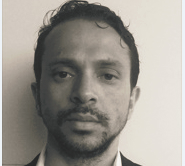Trump’s Domestic Countering Violent Extremism Policies Look a Lot Like Obama’s
Editor’s Note: Programs to counter violent extremism seemed under siege in the early days of the Trump administration, with officials questioning their focus and very purpose. Seamus Hughes and Haroro J. Ingram, of the Program on Extremism at George Washington University, argue that far less has changed than most people recognize. Despite a lot of rhetoric, U.S. government CVE programs have a similar orientation as they did under Obama but remain underfunded and inadequate.
Daniel Byman
***
Published by The Lawfare Institute
in Cooperation With

Editor’s Note: Programs to counter violent extremism seemed under siege in the early days of the Trump administration, with officials questioning their focus and very purpose. Seamus Hughes and Haroro J. Ingram, of the Program on Extremism at George Washington University, argue that far less has changed than most people recognize. Despite a lot of rhetoric, U.S. government CVE programs have a similar orientation as they did under Obama but remain underfunded and inadequate.
Daniel Byman
***
In the early days of the Trump administration, there was public concern that its countering violent extremism (CVE) policies would take a dramatically different direction from those of the previous administration. News stories warned that Trump would adopt a more draconian and myopic approach to prevention, apparently captured in a potential change in label from “countering violent extremism” to “countering radical Islamic extremism.” As this language suggests, observers worried that the Trump administration would focus exclusively on Islamists, ignoring right-wing groups and other radicals. While these beliefs were understandably influenced by campaign rhetoric and more dramatic policy changes in other areas, after two years the worry now appears to be largely unfounded. Whether through intent or drift, the Trump administration’s approach to CVE has maintained a largely similar policy focus and trajectory to that of the Obama White House. Recent budget cuts are significant, but this reflects an ongoing trend of preventive efforts being underfunded and understaffed. With little substantively different between the current and previous administrations, the breathlessness about the current state of terrorism prevention initiatives in the United States needs to be replaced by a more sober, nonpartisan assessment.
Contrary to a recent spate of reminiscing about previous CVE policies in the United States, the Obama administration’s efforts were met with widespread criticism, including from experts, civil right lawyers and the communities targeted by Islamic State recruitment themselves. There is an ideological backdrop to all this that helps to explain why CVE policies in the United States were hamstrung from the beginning. There was very little organic grassroots support for CVE. Only a handful of government officials and family members of radicalized individuals seemed truly committed to the cause of finding a third way between arresting someone or doing nothing. Despite being encumbered by problems that also accompanied the adoption of CVE thought and practice in other parts of the world, CVE policies pressed on. Bureaucracies have an amazing ability to keep their heads down and do their work.
Which brings us to the current day. The recently released National Strategy for Counterterrorism called for a nationwide “prevention architecture” that would “through engagement, public communications, and diplomacy … strengthen and connect our partners in civil society who are eager to expand their limited terrorism prevention efforts.” The report stated that these policies would “raise awareness of radicalization and recruitment dynamics, [and] highlight successful prevention and intervention approaches domestically and overseas.” If this sounds familiar, that’s because it should: The Obama administration outlined an almost identical strategy. Its 2011 Strategic Implementation Plan praised Department of Homeland Security efforts that “began to raise awareness about violent extremism among private sector actors and foundations and connected them with community civic activists interested in developing programs to counter violent extremism.”
Other public statements mirror the similar approaches between the two administrations. The Obama administration’s director of the National Counterterrorism Center, Nick Rasmussen, in 2015 congressional testimony, described CVE programming as a “steady proliferation of more proactive and engaged community awareness efforts across the United States, with the goal of giving communities information and tools they need to see extremism in their midst and do something about it before it manifests itself into violence.” Testimony from Rasmussen two years later, then under the Trump administration, had a familiar tone. In 2017, he stated that “we have been successful at helping provide communities with the information and tools they need to identify potential extremists and to engage with them before they reach the point of becoming an actual terrorist.”
Contrary to initial concerns, the Trump administration has not radically shifted domestic CVE policies. Of course, this is not to say that there have been no changes at all. A notable exception is a reduction in resources and staff for CVE programs. Congress was happy to provide $10 million in grant funding to the Department of Homeland Security for CVE programs under the Obama administration, but the current administration has not made a similar request to the appropriators. The cuts that resulted in Department of Homeland Security grants being defunded particularly affected programs that focused on “domestic terrorism” in the United States, which represents a continued terrorist threat to the homeland.
Cuts to resources and personnel should not be dismissed lightly—they hurt. The administration’s inflammatory political rhetoric also should not be downplayed. It has the potential to be leveraged by violent extremists on opposing ends of the ideological spectrum; while those who feel victimized will use it to reinforce narratives of persecution, the extreme right may use it as evidence of their ideas becoming more mainstream. The consequence would be a more volatile security environment.
And still, barring a significant influx in resources to fund a dramatic shift in prevention strategy that reflects the predictions of pundits in 2017, the U.S. government’s domestic CVE efforts will largely continue as they have for the past decade: underfunded, understaffed, and focused on individuals influenced by the Islamic State and other jihadi groups more than right-wing extremists. Just as it was under the previous administration.
The state of terrorism prevention in the United States is not positive, but neither does it warrant pining for the past. What is most important now is serious, nonpartisan and pragmatic debate about how to recalibrate terrorism prevention efforts to harness both top-down, federally led and bottom-up, state and local activities. A recent report on domestic CVE programs commissioned by the Department of Homeland Security identified recommendations for improving terrorism prevention efforts. Its overall assessment was that the federal government should focus its efforts on supporting state, local, nongovernmental and private terrorism prevention activities—essentially having the federal government act as a quality-control agent for local prevention efforts. It also highlighted the need to continue radicalization awareness efforts and create non-law enforcement intervention models for terrorism suspects. Notably, the report did not advocate for a radical shift in terrorism prevention efforts. Quite the contrary, it was a largely stay-the-course assessment with marginal adjustments and the perennial request for increased resources. The Trump administration endorsed the study and its findings in February.
There are significant problems with terrorism prevention programs, but these issues have been deeply ingrained over two administrations. What is required is a serious and sober discussion about the way forward for domestic prevention, devoid of a politicalized interpretation of the current efforts.
If the Trump administration wants to put its mark on domestic CVE policies instead of simply continuing the status quo, it must be willing to make significant structural changes. First, it should release an overarching terrorism prevention strategy that complements the National Strategy for Counterterrorism, and follow up with a robust and transparent congressional funding request. Second, it should name a single departmental lead to coordinate, implement and provide oversight in order to focus transparency and accountability for this effort. Third, if it truly wants civil society to play a central role in terrorism prevention initiatives, it needs to provide guidance to operators at the local grassroots level. These changes could reinvigorate CVE policies in the United States and provide the resources needed to make a greater difference.
The terrorism prevention bureaucracy has been quietly and slowly grinding along for two administrations. If you liked domestic CVE policies during the Obama administration, you should like them under the Trump administration. If you hated CVE policies during the 44th president’s tenure, you can still hate them, but for the sake of intellectual honesty do not hate them any more than before. Or, if you’re like us, you could wish they were more effective and better resourced than they ever have been.






